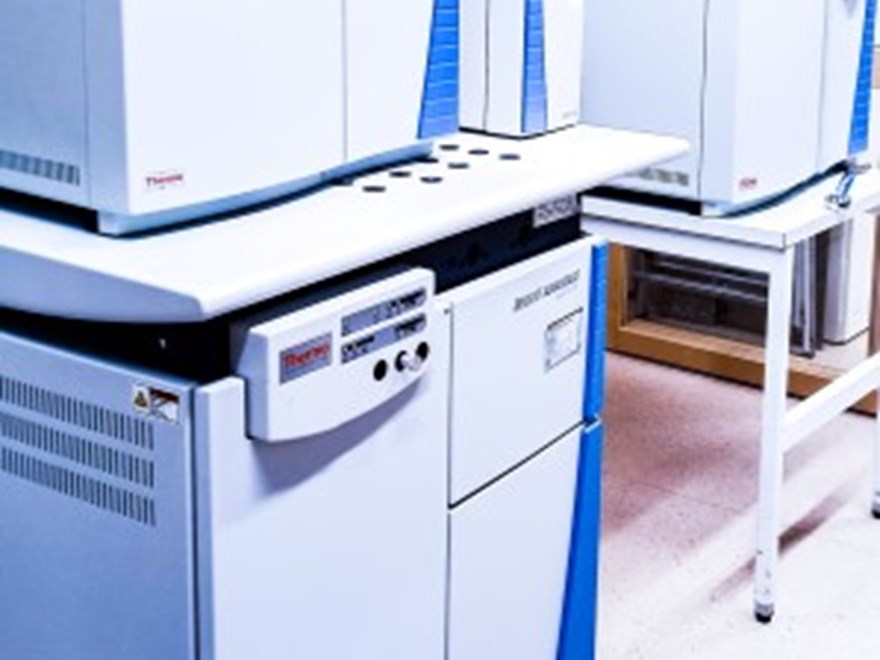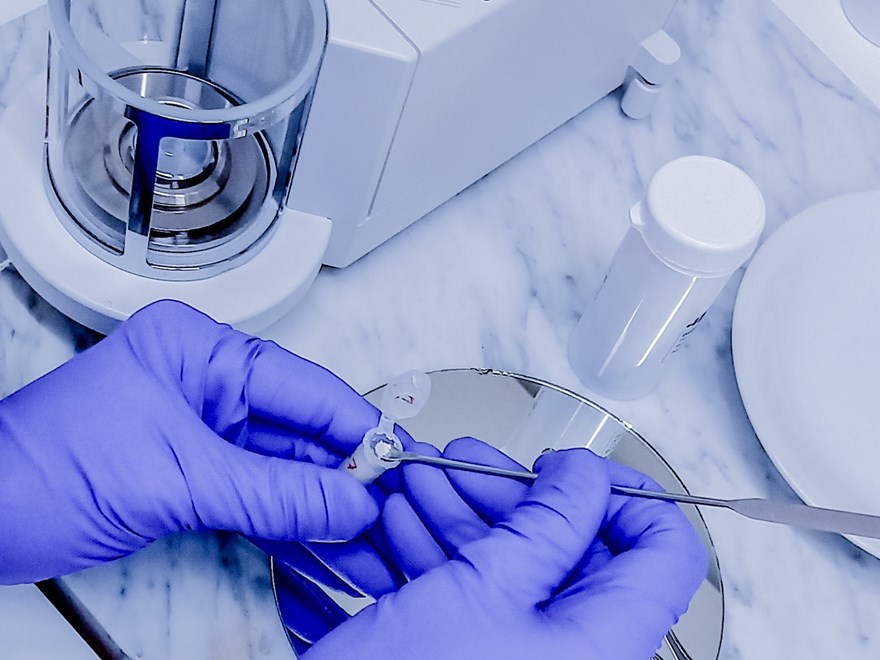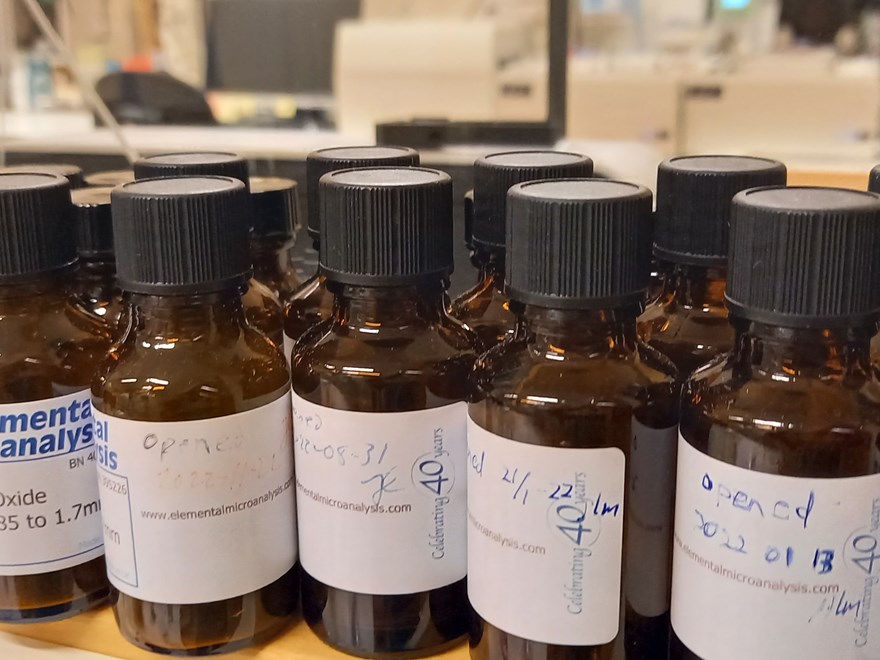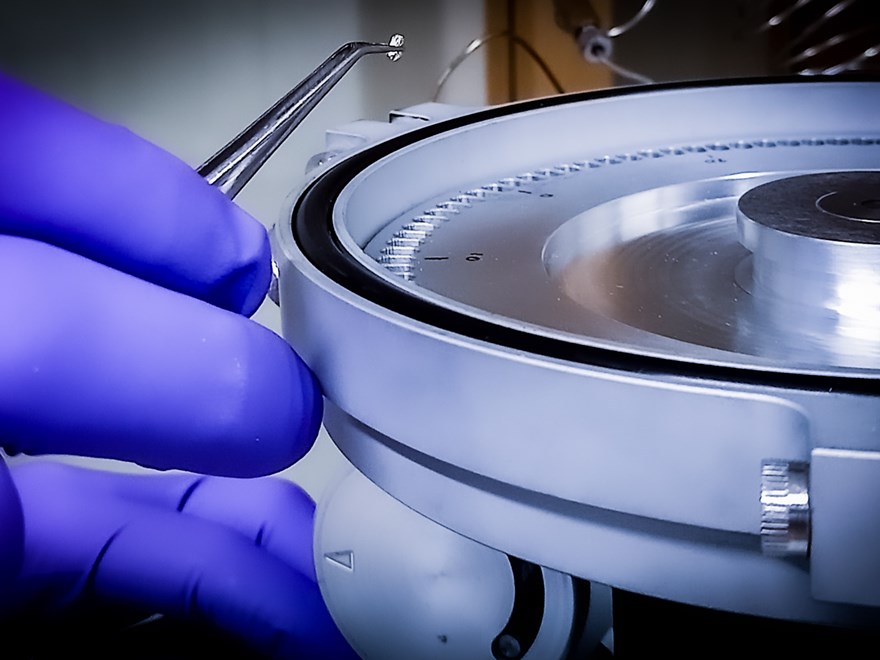Solids
Solids
13C and 15N, natural abundance
We analyse a variety of samples (soils, plant material, animal tissues, filters) by Elemental Analyzer - Isotope Ratio Mass Spectrometry (EA-IRMS). The instrument setup consists of an elemental analyzer (Flash EA 2000) connected to a continuous flow isotope ratio mass spectrometer (DeltaV), both from Thermo Fisher Scientific, Bremen, Germany. Each sequence of samples is analysed together with several replicates of two different inhouse standards, which have previously been standardized against Standard reference materials (reference material). For ωN these materials were atropine, cellulose, and NIST 1515 apple leaves. For d15N they were IAEA-600, IAEA-N-2, USGS40, and USGS41. For ωC the reference materials were cyclohexanone, nicotinamide, and sucrose. For d13C the reference materials IAEA-600, IAEA-CH-6, and USGS40 were used. In each sequence, at least one pine needle sample is used for quality control. Data is corrected for drift and size before given the final results.
The accepted standard deviation of inhouse laboratory standards is <0.15‰ for both δ 13C and δ 15N
Sample Preparation
13C and 15N enriched material
Tracer Studies
In tracer studies, isotopically labelled compounds are added to a system to trace the movement, transformation or uptake of the compounds in time and space. One advantage of using an IRMS instrument is the very small differences in the amount of tracer that can be measured. Hence, only a small amount of tracer needs to be added and the disturbance of the natural system can be minimized. The 15N isotope is rare, the natural distribution is Nitrogen 14N 99.63 whereas 15N 0.36 atom%.
In practice
IRMS instrumentation is optimized to analyze small differences in natural abundance and therefore tracer studies relying on analysis with IRMS need to find the sweet spot of enrichment that is not too low nor too high. And remember adding more is not always better.
Addition or amendments of stable isotopes to a natural system can be seen as a contamination and if one is not careful this contamination may spread. When working with enriched material it is essential to use a defined space, and assigned tools and try to work as clean as possible. Forget all you know about randomized sample sets. Sort your samples from lowest to highest enrichment. Analyzing in the sequence from lower to high will minimize the carry over effect that will be present in the analysis. Mark your samples adequately so it is absolutely clear that this material has been labelled with a stable isotope. Not only important in your own workshop but especially important when sending samples to us for analysis. Always keep labelled material separated from natural abundance and when packing samples in the tin capsules use separate titer plates.
Introduction/analysis of samples higher than 2 atom% of 15N will cause extremely high contamination and carry over in our instrumental set-up. If this happens there will be an extra charge for the cost of instrument cleaning and the downtime it causes.



